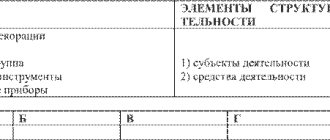In various areas of society, at the level of an individual, company or state, there is a need for effective tools of assistance and influence.
Social facilitation is just one of them. This tool allows you to cope with a variety of tasks and achieve your goals. Among them is the way out of the crisis, as well as the direction of one person or group of people towards changes of a completely different quality.
Definition of the concept
Social facilitation is a phenomenon expressed in the effect of enhancing the active activity of the individual, which manifests itself in the presence of other people. In other words, a person performs even the simplest tasks (for example, crossing out certain letters in a text, easy addition examples, etc.) much better if he understands that he is being watched.
Social facilitation is a change in an individual's behavior that is induced by the presence of an audience. This phenomenon manifests itself in increased emotional arousal of the performer.
It has also been established that the speed and quality of performing more complex work in the presence of strangers undoubtedly decreases. This explains the opposite phenomenon to what social facilitation is. It is called social inhibition.
Impact on science
Inhibition in psychology is a significant decrease in the effectiveness of an individual’s actions due to the presence of other people nearby.
This phenomenon has not been fully studied to date and therefore increasingly attracts the attention of scientists who regularly conduct various studies in this area, checking and double-checking various aspects that influence the development and appearance of this phenomenon.
The last such study was conducted in 2014. It was devoted to studying the characteristics of social inhibition in healthy people, as well as in autistic people. The main conclusion of this study is the conclusion that inhibition cannot be considered outside the situations in which it manifests itself.
History of discovery
In 1989, psychologist Norman Triplett noted that cyclists are able to achieve better results when they compete with each other. All athletes' performance is significantly reduced if they simply turn on the stopwatch during training. The psychologist conducted a number of studies in order to confirm his guesses.
Subsequently, Triplett's experiments became one of the first in social psychology. They consisted of asking children to wind fishing line onto a spinning reel. It was confirmed that the kids worked much more energetically when other people were present nearby. Reeling in the line alone was a more challenging task for them.
Scientists have observed a similar effect, which psychologist Floyd Opport called social facilitation, in animals. For example, chickens eat grains faster, and ants dig holes in the ground if other individuals are nearby.
Thus, social facilitation in psychology is the influence of social assessment on performance. This phenomenon has caused unprecedented interest in scientific circles. This led to the fact that the research begun by Norman Triplett was further continued. Somewhat later, the fact was established that if, when performing a certain task, there are passive observers near the performer, then the effectiveness of his actions is significantly reduced.
This was the moment when scientists were unable to compare the two phenomena, which led the general theory to a dead end.
The social facilitation research program was resumed only in 1965 by Robert Zejonc. He researched social facilitation much more deeply. The activation theory, formulated by him, explained two seemingly opposite phenomena. Robert Zeyonc suggested that the phenomenon of social facilitation is possible only in cases of performing the simplest, most familiar and learned mechanical actions by a person. The opposite effect, which is called inhibition, occurs in more complex intellectual situations.
This statement was based on the established fact that the emerging excitation is an activator of the dominant reaction. In this case, arousal refers to the presence of other people who are nearby in the process of performing a particular task. That is why, in cases of simple work, the most likely, dominant reaction is an incentive to carry out the necessary actions as quickly as possible. At the same time, there is often only one correct way to solve a given problem. In cases where the correct answer is not so obvious, the excitement caused by the presence of other people provokes incorrect reactions.
Somewhat later, there were other assumptions explaining the phenomenon of social facilitation and inhibition. This was, for example, the distraction-conflict model proposed by Robert Barron. According to her theory, the presence of strangers causes internal conflict in any person. It lies in the fact that the individual cannot determine whether to pay attention to the audience or complete the task assigned to him. Such a conflict, arising in connection with increased arousal, either helps to complete the task, or, conversely, interferes with it.
Search for the future or Foresight
This large group technique was developed by Marvin Weisbord . It is used when, with the participation of a significant number of people, it is necessary to obtain a picture of the future, a scenario for the development of a situation based on existing experience and past precedents. This pattern of events is the basis for civic assemblies in German communes, and is often used as a tool for organized and productive work.
No less effectively, this technique can be used in or “Foresight” has an important feature - it allows you to unite heterogeneous subgroups to develop a single solution, for example, employees, clients and suppliers. Their joint participation will have a positive impact on the quality of decisions made, as it will allow finding common ground of interests of each party in the strategy, goals and prospects of the enterprise.
The event typically lasts two to three days and is carried out in six steps:
- A retrospective look into the past within a horizon relevant to the group.
- Analysis of trends - global and local, positive and negative.
- Assessment of the current situation based on criteria selected by the group.
- Creating a joint vision of an attractive picture of the future.
- Formulating common goals - realistic or breakthrough.
- Making decisions and planning steps.
The advantage of this group work technique is the ability to bring together different, even polar, points of view and “create” the future in the present. The vision created in this way is based on the achievements of the past, which can and should be used in the future. This helps participants perceive the dream “without separation from reality” and believe in themselves.
Fear of evaluation
Social psychology explains social facilitation and inhibition as phenomena caused by three reasons. The first of these is fear of evaluation. Psychologists explain this effect by saying that a person’s dominant reactions are much stronger when he thinks or knows for sure that those present are evaluating him. This is why the following happens:
- the performer tries to work faster and better if other performers or colleagues have slightly greater skill or competence;
- the level of excitement drops when in the group of authoritative people there appear those whose opinions the performer is indifferent to;
- those around them have the greatest influence on those who worry about the expressed opinions of observers and the assessments they give;
- the phenomenon of social facilitation or inhibition finds its most striking manifestation in cases where the people present are unfamiliar to the performer, and he does not have time to follow them.
According to psychologists, observers instill anxiety in a person because he cares how all his actions will be assessed. At the same time, the performer experiences embarrassment, which prevents him from coping with the task proposed to him. Thus, basketball players who think about how they look from the outside and begin to analyze all their movements will definitely miss during the decisive shot.
Impact on team management techniques
When managing work teams, it is necessary to take into account the risks of the phenomena of inhibition and facilitation. Social psychology indicates that the degree of emotional development of the group itself plays a decisive role.
If the team is formed of self-sufficient individuals who know their work, then observing them (or one of them separately) will lead to facilitation and increased productivity (or increased efficiency).
When there are problems in a collective community, surveillance and control can only make the situation worse. In this case, it makes sense to observe the process only when employees increase their level and begin to feel more confident.
Distraction
The phenomenon of social facilitation is that sometimes the performer begins to think about how his colleagues are doing their work or how the audience will react to the result. In this case, the person’s attention is scattered, and excitement begins to grow. In this case, a conflict arises that moves the performer’s thoughts between the inability to escape the attention of others and the need to focus on solving the task at hand.
An example of this type of social facilitation is the distraction of a person's attention not only due to the presence of other people, but also due to periodically appearing flashes of light.
Overload theory
An alternative to the inhibition theory is the overload theory, according to which various distractions do not lead to an increase in arousal and the development of anxiety, but to an overload of the brain, which reduces the efficiency of its activity.
Moreover, in such a situation, an overabundance of information occurs in the area of working memory, and the person temporarily loses the ability to solve complex problems.
As a result of a stressful situation when performing actions in public, a person begins to worry, which leads to disorientation and the parallel emergence of multiple solutions, resulting in overload.
It is not possible to choose the right decision in such a state due to the lack of an adequate reaction of a confused person.
The fact that there is an observer
Social facilitation in psychology is a phenomenon that causes not only the fear of external evaluation or scattered attention. A similar effect may be caused by the presence of observers. For example, during an experiment conducted by psychologists, subjects were asked to name their favorite colors. At the same time, observers were nearby. On the one hand, such tasks have neither right nor wrong answers that could be assessed by outsiders. However, their presence clearly “electrified” the subjects. From this, scientists concluded that people's reaction to the presence of an audience of observers occurs unconsciously. However, there are certain factors that have a direct impact on the degree of reaction.
Among them are the following:
- The number of people around. The more observers there are, the more influence they have on an individual's actions. A person becomes much more excited when there is a mass audience.
- The presence of sympathy and antipathy within the group itself. When people interact well with each other, the effectiveness of completing a task increases significantly.
- Degree of spatial proximity. Social arousal, as well as the degree of social facilitation (inhibition), is directly dependent on how close people are to each other.
Role Boundaries
- The facilitator is not a member of the group and has no say in group decisions.
- The role of a facilitator does not involve performing the tasks of a clerk, stenographer, logistician or other administrative functions.
- The facilitator does not mediate the relationship between the group and the broader context of the organization or other groups outside the organization.
- The facilitator does not perform arbitration functions; group members are independently responsible for resolving conflicts and building relationships.
- The facilitator is not responsible for the quality of decisions made and is not responsible for their implementation.
Gender of observers
A particularly striking effect of social facilitation occurs in cases where the audience of outside observers is represented by people of the opposite sex. For example, a man will certainly make a large number of mistakes if women are present nearby. In the same way, he will very quickly complete the easiest task in front of the ladies. For example, during the experiment, athletes ran at high speed past the podium from which a woman was watching them. Their speed was significantly lower if the lady was sitting with her back to them.
Properties of temperament
It is known that sanguine people adapt to changing conditions more easily than others. Choleric people tend to act impulsively and take rash steps. Phlegmatic people are quite calm and reasonable, while melancholic people are characterized by emotional instability and excessive impressionability. How does social facilitation affect all four types? An example can be given as follows: at the very first difficulties, a melancholic person tends to immediately withdraw into himself, a phlegmatic person tries to put everything “into order,” a sanguine person is active and productive, and a choleric person is loudly indignant.
Skill level
The phenomenon of social facilitation and inhibition can manifest itself in different ways. Everything will depend on who is performing the task - a “novice” or a “professional”. How does social facilitation work? Examples from life in this case are found literally at every step. Thus, a person who is just learning a new job and training on his own will feel much calmer if there are no outside observers nearby. And here many can remember how they learned to drive a car. This task is very difficult and complex. And at first, a beginner often has to stop literally in the middle of the road to think about the current situation. However, everything changes with experience. When all movements are brought to automaticity, even the presence of passengers in the cabin cannot cause emotional stress and lead to mistakes.
That is why, in order to do their job one hundred percent, each person must first practice his actions and movements, bringing them to automatism. Only after this will he not depend on the influence of the audience. Experienced professionals, being dexterous and trained, in the presence of outside observers only improve the effectiveness of their actions. After all, they feel quite confident in activities that are familiar to them, striving to demonstrate the skills they have acquired.
World Cafe
The World Cafe group work approach to implementing change was developed by Juanita Brown and David Isaacs . The open-ended methodology offers participants a high degree of freedom, brings people together into teams and releases their creativity.
“World Café” is perfect when a large number of participants need to exchange knowledge and experience on a chosen topic and collect maximum information, impressions, opinions and assessments. The result of such a scheme will be a general “picture of the world” obtained in a short time - a reflection of the situation in the minds of those present and a cross-section of the general opinion on the topic.
Work using this method is most often organized for two to three hours and even outwardly differs from other group work technologies. In the room (“Cafe”) there are tables covered with large sheets of paper on which you can write, draw, take notes, draw and record information in any other way. A moderator (“Host”) sits at each table at all times; the rest of the participants move freely between them when a new discussion circle is announced.
Information worthy of attention, ideas for solving problems and opinions are recorded by the moderator without fail. At the end of the next round of discussion, a sheet of paper with notes is attached to the table, and the moderator summarizes the past discussion and its results into a mini-presentation.
Each moderator informs the participants who come to his table about the best practices received from previous “guests of the Cafe”. After this, the newly arrived “guests” voice their ideas and proposals on the problem, making a contribution to the general discussion. This technique helps to generate a large number of ideas, immediately question them, and either refute them or accept them for further work.
Thus, a significant amount of knowledge and opinions of participants on the chosen topic is concentrated in one place. In addition, the discussion process in the World Café creates conditions for the simultaneous mutual intensive learning of participants - a kind of knowledge transfer that is a “side effect” of group work.
Participants in such an event must be disciplined enough to evenly distribute time between visits to different tables. Therefore, the facilitator of the entire meeting must strictly monitor the time and help those present move from table to table on time. A concentrated, rich discussion is the desired product for the organizers of the World Café, which means that the facilitator will have to work hard to tear participants away from the conversation.
Another important task of the facilitator here will be organizing the final part - presenting the results of the meeting to all tables. With a large number of participants, it will be difficult to collect and properly process all the findings. Therefore, high demands must be placed on the selection of moderators, their organizational and facilitation skills.
Social laziness
How much individual contribution does each member of the work group make? When people share a common goal, a psychological phenomenon that is distinct from social facilitation occurs.
Almost a century ago, an engineer from France M. Ringelmann calculated that the collective performance demonstrated by a group of people does not reach half of that which all its members individually possess. An example of this was an experiment in which a rope was pulled. The subjects did not know whether they were making efforts together or alone, as they were blindfolded. But if they were told that the team was pulling the rope, their effort decreased by 18%. At the same time, they believed that they were working to the best of their ability. This is the phenomenon of social loafing, the main reason for which lies in the fact that group work reduces the fear of evaluation. People who are not responsible for the final result are unable to appreciate personal contribution. Their responsibility for solving the task is divided equally among group members.
Agriculture can be cited as an example of social laziness. After all, personal gardens, which occupy only one percent of the land in the country, produce almost 27% of the harvest.
Examples of positions
During discussions, the facilitator can take a more or less active position. His active participation can be manifested as follows:
- Supports constructiveness.
- Takes you away from personal confrontations.
- Interested in the opinions of participants.
- Strives to understand the group's ideas and does not impose his own.
- Gives equal attention to all participants, not just leaders or active ones.
- Does not allow categorical assessments, condemnation, devaluation, arrogance.
- Adjusts or modifies the original plan as necessary.
Facilitation and business
Current economic changes often pose numerous questions for both individuals and companies. What to do? What's happening? How to develop during a crisis? How to prepare yourself for future growth? Of course, there are no ready answers to these questions. People search for them during joint discussions during brainstorming sessions, strategic sessions and working meetings.
However, time at such meetings is often wasted by participants. Each of them is so involved in the conversation that disagreements increase and the effectiveness of group work sharply decreases. And here social facilitation comes to the rescue, which, having entered the business sphere, took a professional form. Translated from English facilitate - “help, facilitate.” That is why facilitation in business is understood as providing assistance that allows the group to solve the task assigned to it. This process helps to increase work efficiency, unlock the potential of participants, and increase their interest.
When using technology to facilitate meetings, sessions and brainstorming sessions, performers are directed towards more intense mental work.
Facilitation in business is both a process and a series of skills that allow you to effectively organize a conversation to discuss a controversial situation and a complex problem, completing all the items on the agenda of a meeting or meeting without wasting time. And all this becomes possible only with preliminary preparation, planning and a constructive approach.
Skill Examples
Like any other professional, a facilitator requires certain skills and type of behavior, tools and methods to organize his work:
- Listen carefully to and observe nonverbal messages from participants.
- Remember what was said and help the group accumulate information.
- Establish simple and clear communication between group members.
- Pay attention to similarities and differences in the statements made.
- Analyze and synthesize what was said, identify points of agreement and disagreement.
- Identify suggestions and bring them to the group's attention.
- Encourage constructive behavior and pay attention to non-constructive behavior.
- Create a model of effective behavior and demonstrate it by example.
- Facilitate the flow of feedback in a healthy manner between participants in the process.
- Correct accusatory and defensive forms of communication and other “toxins”.
- Work with individual behavior of group members based on feedback.
- Be patient with the internal dynamics and speed of the group.
- Increase trust within the group, in your role and in the chosen process.
- Pay attention to successes, reward efforts and encourage group members.
- Monitor and maintain the ecology of each person's boundaries.
Robert Zajonc's principle
Social psychologist Robert Zajonc, having become familiar with the topic of social facilitation, conducted several experiments and came to the following conclusion. During the process of social facilitation, a dominant response is aroused in people. Thanks to this increased arousal, people solve easy anagrams faster and solve simple problems more successfully.
When it comes to complex problems, where the correct answer is not always obvious, then excessive arousal increases the likelihood of error. Therefore, for more complex tasks, it is better to be in a calm state in order to successfully cope with them.
Source









